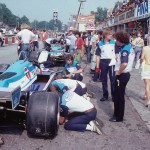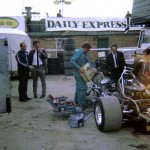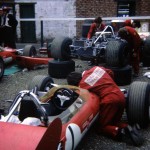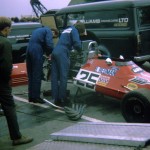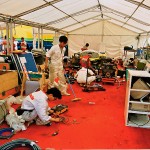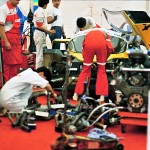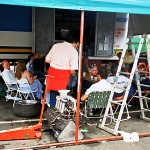Gallery: Retro Engine Work
 One of the reasons modern motor racing can be so tedious, is that the cars are mechanically very reliable .
One of the reasons modern motor racing can be so tedious, is that the cars are mechanically very reliable .
Of course mechanical failures still do occur, but their frequency is so much less than it used to be. There are many reasons for this, including massive advances in the science of engine design, the use of computers in design and manufacture , the utilisation of new materials and the use of electronics. Telemetry even allows “sick” engines to be shut down before they fail.
A major factor is also that engines in top level formulae nowadays are assembled meticulously in clean room environments and only worked on by engine experts . The engines come to the teams in crates and after the race they go back to the engine specialist, even if it is in-house, in crates. Nothing is touched at the races. Even top and middle level Formula Ford competitors don’t work on their own engines nowadays.
Many top level teams don’t even own the engines, they lease them from the engine manufacturer. Back in the 80s and 90s when the Cosworth V8 was the default engine choice for CART and Indy cars in the US, Cosworth had a major logistics operation servicing their engines, which were leased to most of the teams. Now in Europe and the States even top level historic competitors running Cosworth V8’s use specialist engine companies to service their engines.
Turn the clock back 40 plus years and it was a very different story. See the photo of the works Lotus F1 mechanics working on the engines with the cars standing on tyres in the paddock at Silverstone . Also from the same era Frank Williams’ paddock “facilities” are a very far cry from the massive infrastructure the Williams team take to a Grand Prix now. And how about the Ferrari mechanics at the 1981 Grand Prix at Monza peering into the engine with a torch, or the smiling Ligier mechanics in the Monza pitlane taking in the great Italian scenery whilst they work on the cars right on the pit lane? No hiding cars behind sight screens in air-conditioned pits, with the unsmiling technicians and stoney faced drivers all looking like they have just been told that they have a terminal disease as we see at the Grand Prix now.
Looking at these old pictures I can’t help thinking that is amazing that the engines performed as well as they did.
Even 20 years ago things were different . The unidentified team at Le Mans are having lunch on the Friday before the 1988 race with presumably their spare DFV sitting right beside the lunch table . The Toyota TOMS team certainly got stuck into the engine in their tent and quite a few parts seemed to have been left over when they swept up afterwards . And yes the TOMS cars did not finish the 24 hours, but they did start .
Obviously the clock will never be turned back, but I do wish that I had appreciated my motor racing even more back in the 60s,70s and 80s and I do wish that film had been cheaper or that digital photography had been invented 50 years earlier!

